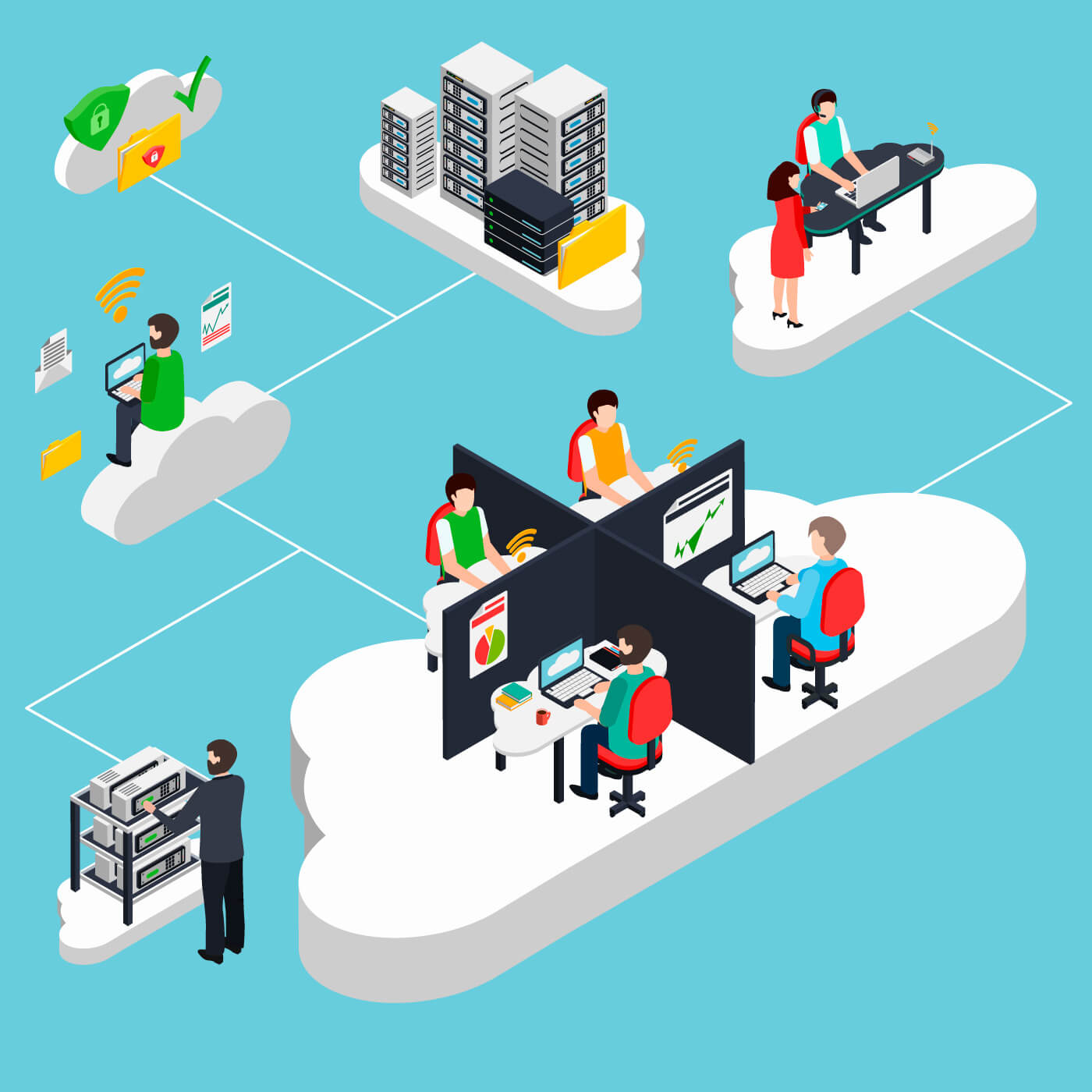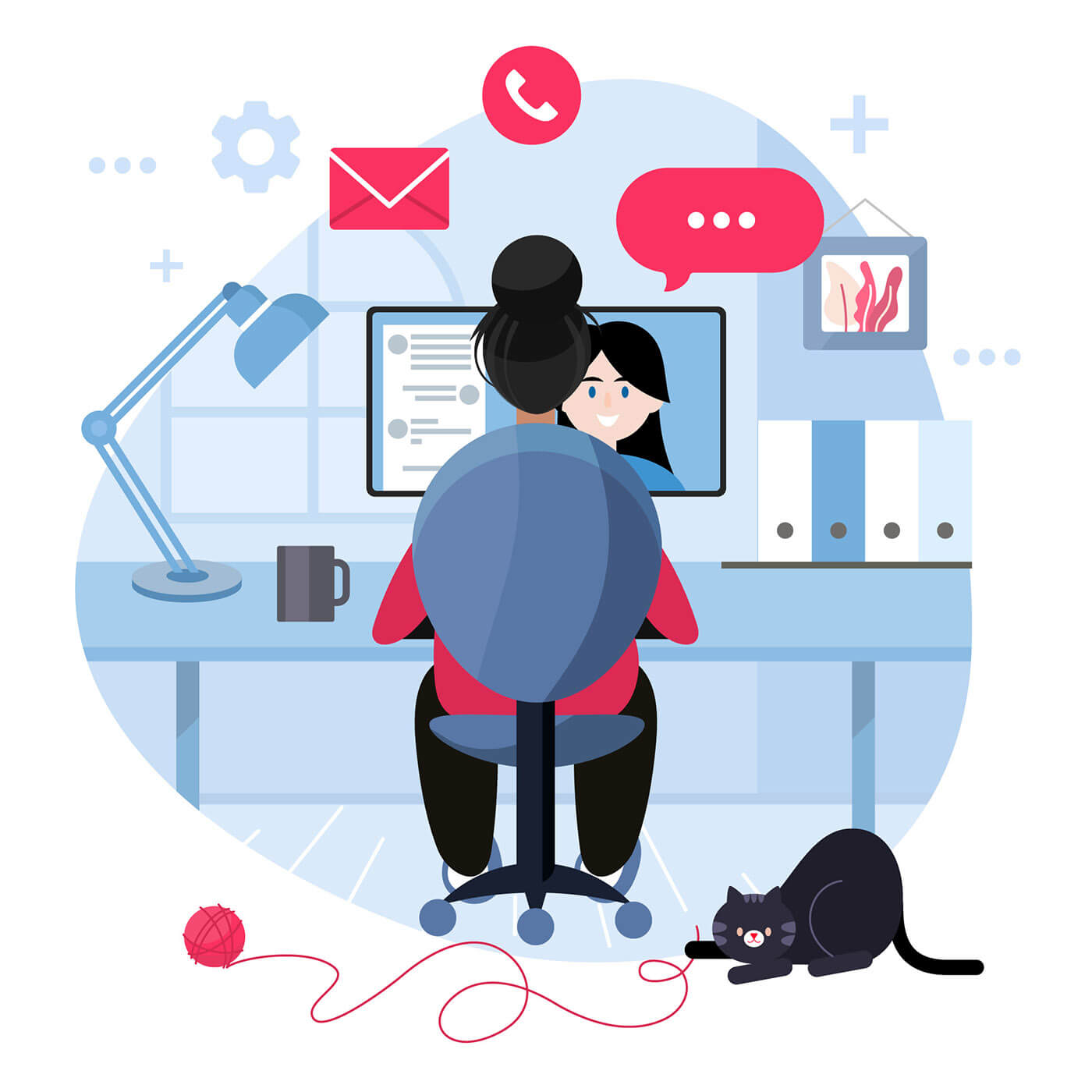How Does Remote Monitoring Work for a Remote Team
If you’re like much of the business world and you are managing a remote workforce in the aftermath of the COVID-19 pandemic, then you have most likely figured out many of the ins-and-outs of working from home. Remote work is prevalent because of its flexibility and the ability to bring in better employees worldwide.
Even if your business does not anticipate staying working remotely forever, it’s important to establish processes for remote workers so that business continuity remains in the future. While it comes with many benefits, remote work still can lead to business risks, like insider threats and insufficient productivity levels.

Implementing remote monitoring for your remote team makes the most sense. Here is our breakdown of how remote monitoring works for a remote team:
What is Remote Monitoring?
Remote worker monitoring refers to overseeing a remote team by the team’s manager or a business owner. A business would implement remote tracking to stay on top of business processes, tracking project timelines, ensure that the business assets aren’t at risk, and improve company morale.
Remote monitoring can rely on several tools and techniques, like remote webcam monitoring, IP monitoring, and remote monitoring systems. The most common form of remote monitoring is in employee monitoring software. This software is installed onto the remote computers that the company aims to monitor. The software runs, either stealthily in the background or known to the employee, to track common computer behaviors, employee attendance, project time tracking, keystroke logging, and much more.
Each business can use this monitoring software for its monitoring needs. For the most part, there are two main reasons why a company would want to deploy remote monitoring: to protect against insider threats and improve the business’s productivity levels. So, depending on which of these reasons a business needs to monitor, or if the company wants to watch both, this will determine the features the remote monitoring software should have.
In deploying this software, the employer checks on the employees from a singular remote console to ensure that the business is not taken advantage of. Remote employee monitoring is safe and secures the business against rogue employees, malicious hackers, and time theft.
How Remote Monitoring Works for a Remote Team

If you are keen to implement remote monitoring, understanding how it works will give you a sense of what this powerful software can do. As mentioned previously, remote monitoring is typically implemented for two main goals: insider threat protection and managing employee productivity. It’s vital to establish which of these two goals you will be implementing as this determines how the remote software will be used.
Let’s say that you want to protect against insider threats. If this is the case, then you’ll want to keep the software hidden. Secret remote surveillance can be challenging when working with a remote employee who is not using company computers. It requires remote workers to install the software onto their personal work computers.
If each remote employee is sent business computers to use when working from home, your business can control the software. Install the software before the computers are sent out and keep it running hidden in the background. Your business will also be able to install programs that allow for remote access so that you can continue to keep tabs on computer activity.
No matter how you set this up, employees will likely need to interact with the monitoring software to track time. The time tracking features of this software might include attendance tracking or more detailed tracking like project tracking. For project tracking, employees will need to start tracking in the monitoring software. This allows project managers, scrum masters, or business owners to see how long projects are taking and what employees are doing throughout the day.
Using Remote Monitoring Software
In using remote monitoring software, be sure to identify how you will be installing the software onto the computers. If employees are using personal computers, ask them to install the software themselves.
If you are using company computers, then install the software through the admin console of monitoring software. The admin console can only access data from computers on the same network and data from computers that already have the software installed, so you will likely need to install the software before sending it to the remote team members.
Once the software is installed, the data can be accessed from this main console. You can use the features of the software to choose what you want to monitor. Intuitive remote monitoring software will have features like the ability to view the computer ongoings, website tracking, screen captures, record emails, and record keystrokes. The admin console can simultaneously view multiple users’ screens, so the computer monitoring admin can effectively communicate across the entire remote team.
Remote monitoring software drastically reduces the amount of time a business needs to monitor its team manually. All monitoring settings are done through the admin console, and CTOs no longer need to move through each computer network to track detailed employee activity logs. Some key features to look out for include:
- URL tracking: Browse the employees’ web search history. Employees might delete their web search history, but remote monitoring software records it and stores it through the admin console. See which websites users are spending time on, including the total time spent on top visited websites.
- Program monitoring: Similarly to URL tracking, program monitoring reports the top programs that the employee was using, how long they were using the program, and even time stamps and screenshots for every user. This feature can record local and remote sessions through RDP/RDS, TeamViewer, LogMeIn, and more.
- Web console access: The web console is arguably one of the essential features that remote monitoring software needs. Without this feature, admin, CTOs, or managers, would still need to go through the computer logs on each machine to monitor employees manually. A web console will provide a dashboard filled with computer usage stats, the top programs visited, top websites visited, and specific user stats. Get a clear shot of what is going on in your business.
Benefits of Remote Monitoring
If you find yourself spending hours monitoring your employees, then you might recognize that remote monitoring software offloads a lot of this manual labor and automates it. You can have data, clear statistics, and a clear dashboard for more convenient access and comprehensive monitoring of your team.
Remote monitoring is like having an extra set of eyes keeping watch over your team. And because you are taking advantage of software, you will have monitoring features constantly running whenever your employee is working.
If your team is spread out across time zones, then employee monitoring software makes so much sense for your business. There is no way that a single employee or team would effectively monitor a remote workforce spread across time zones. Therefore, in remote monitoring, you save a lot of time, effort, and costs for your business.
Remote monitoring software is more effective for remote activity monitoring. Get insight into what your remote team is doing through working hours. Remote monitoring software still ensures an appropriate amount of worker privacy, and settings can be adjusted so that your remote team’s sensitive information remains secure. See today how your productivity levels improve with remote monitoring software. And, keep your business assets protected against insider threats! It’s a win-win.
By SoftActivity Team